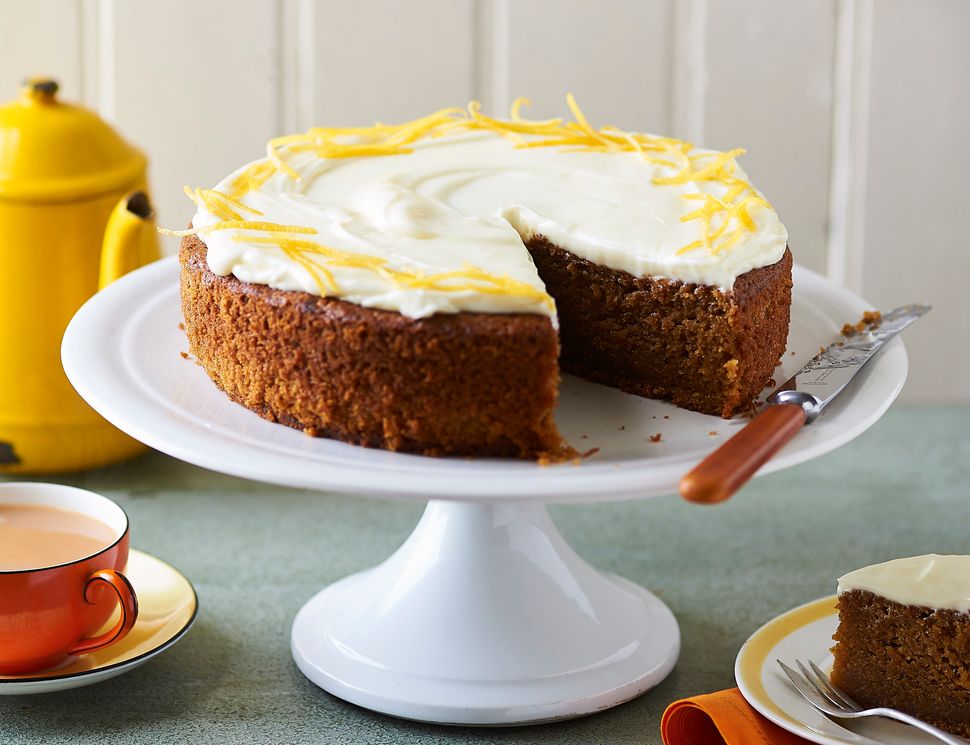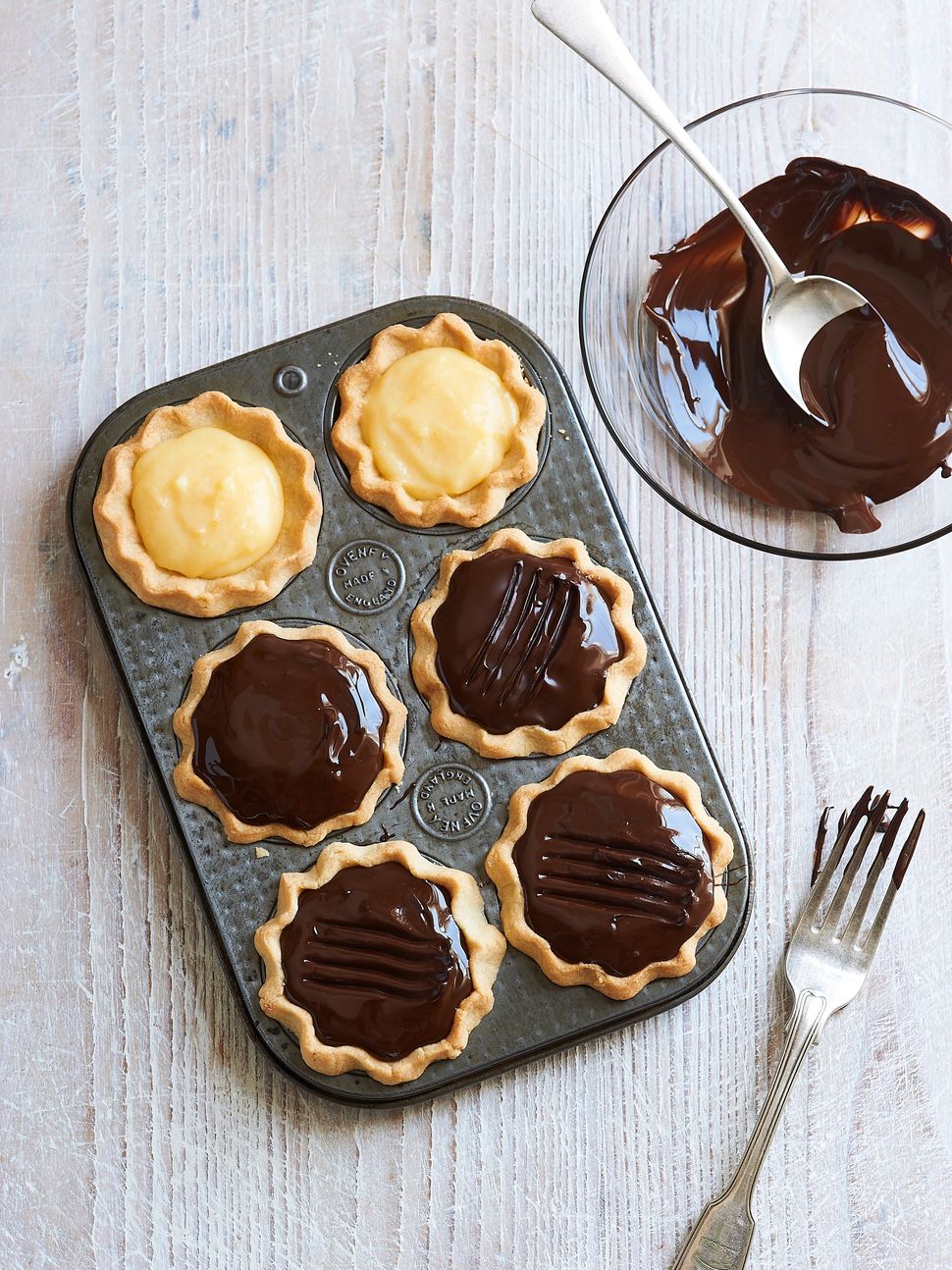
I grew up in New Zealand, with all of its wonderful pan-asian influences, and yet, the food I love and come back to time and time again, is traditional English fare. I remember going for afternoon tea with my grandmother in the cafe in Cornwall Park, Auckland. As a child, it felt like entering another world; one where the pace was slower, the tea was served in teapots, and the cakes looked like little works of art - it is a childhood memory I treasure.
These days, I’m lucky enough to live in the heart of the English countryside and have a traditional English cafe in the county town where Thomas Hardy lived - Gran would have loved it. The recipes in my new book include some of the most well-known cafe classics. When I was thinking about opening Bramble Cafe, these ‘firm favourites’ were the recipes I wrote first and they’ve gradually evolved over the last few years into easy, foolproof, well tested recipes.
Many of the cake recipes are as simple as measuring the ingredients and mixing until combined. I can’t stress strongly enough the need for fresh ingredients. Eggs that are super fresh will make your cakes rise and hold incredibly well. If you’re using eggs from a supermarket, use a pinch extra of baking powder in the cake recipes.
However, it is good to remember that baking is a form of chemistry, so scales and accurate temperatures are very important for perfect bakes. Simple digital scales will give you reliable results every time and a probe thermometer will tell you when things are properly baked, whereas using a skewer only checks a small part of the cake.
Here are two delicious recipes to make an Easter afternoon tea.
Individual Jaffa Tarts
Orange candy-coated, chocolate Jaffa sweets, were my favourite as a kid (and adult) in New Zealand. These tarts make use of that perfect mix of flavours that takes me back to my childhood.

Serves: 6
Ingredients:
Pastry
200 g/1½ cups plain/all-purpose flour
100 g/7 tablespoons butter, at room temperature
20 g/scant 1⁄4 cup ground almonds
60 g/7 tablespoons icing/confectioners’ sugar, plus extra for dusting
1 egg yolk
Orange curd
100 g/7 tablespoons butter
2 eggs
2 egg yolks
75 g/6 tablespoons caster/granulated sugar
100 ml/1⁄3 cup orange juice (about 1 large orange)
2 teaspoons grated orange zest
Chocolate topping
200 g/7 oz. dark/bittersweet chocolate
6 small tart pans or a muffin pan
Method:
Preparation: 20 minutes / cooking: 30 minutes
1. Preheat the oven to 160°C (325°F) Gas 3.
2. For the pastry, in a food processor, blitz the flour, butter and almonds together, before adding the icing/confectioners’ sugar, and then the egg yolk. Continue to blitz until it forms a ball. Roll out the pastry to a thickness of about 2 cm/3⁄4 inch. Wrap it in some clingfilm/plastic wrap and place in the refrigerator for an hour to chill.
3. Once the pastry is chilled, divide into six and roll each of these out to a thickness of about 3 mm/1⁄8 inch (I dust the pastry with a little icing/confectioners’ sugar to stop it sticking). Place the pastry into the small tart pans or muffin pan, covering the base and sides. Place the tart bases in the refrigerator for a further 30 minutes to relax the gluten in the flour.
4. Prick the tart bases with a fork to stop them rising and bake in the preheated oven for 12 minutes until the bases are just starting to turn golden. Remove from the oven and set aside to cool.
5. For the orange curd, soften the butter in a microwave for 30 seconds on high. Place the butter and all of the other curd ingredients in a microwaveable bowl and whisk hard to fully combine. Heat the bowl of ingredients in 30-second bursts in the microwave. Remove and whisk hard between each microwave burst. After four or five bursts the mixture should be hot and thickened, if not, reduce the times to 15 seconds and keep whisking between bursts. Once the mixture is thickened, pour it into the bases, leaving a little room to pour the chocolate layer on top. Place in the refrigerator for at least an hour to set.
6. For the chocolate topping, in the microwave, melt 150 g/5 oz. of the chocolate in a microwaveable bowl. Use the microwave in 15-second bursts until all of the chocolate is melted, before adding the remaining 50 g/2 oz. of chocolate and stirring to combine and temper the chocolate. Pour the tempered chocolate over the top of each tart forming a thin layer. To decorate, I use the back of a fork to form four lines on the chocolate.
Carrot Cake
Cafes everywhere sell carrot cake, but, obviously, I think mine is the best! I leave out the nuts and sultanas/golden raisins, and develop the flavour with the caramel of the brown sugar. I use yogurt to keep it moist and zingy. This is a dense cake and needs the freshness of the cream cheese frosting to balance the heaviness.
Serves: 8.
Ingredients:
Cake
270 g/2 cups finely grated carrots
325 g/generous 1½ cups soft
brown/light muscovado sugar
325 g/scant 21⁄2 cups self-raising/self- rising flour
325 g/1 3⁄8 cups sunflower oil
5 eggs
2 tablespoons five-spice powder
grated zest of 2 lemons
1 teaspoon bicarbonate of soda/baking soda
2 tablespoons boiling water
100 g/scant ½ cup natural/plain Yogurt
Frosting
50 g/31⁄2 tablespoons butter, softened
200 g/scant 11⁄2 cups icing/confectioners’ sugar
200 g/scant 1 cup cream cheese
grated or pared zest of 1 lemon (optional)
25 x 30-cm/10 x 12-inch deep round baking pan, lightly oiled and lined with baking parchment
Method:
Preparation: 15 minutes / cooking: 35-40 minutes
1. Preheat the oven to 140°C (280°F) Gas 1.
2. Add all the cake ingredients except the bicarbonate of soda/baking soda, boiling water and yogurt to a large mixing bowl. Fold together to combine into a smooth mixture.
3. Mix the bicarbonate of soda/baking soda with the boiling water until it is dissolved, then add to the mixture and fold together.
4. Finally add the yogurt and fold to combine all of the ingredients.
5. Pour the mixture into the lined baking pan and bake for 35–40 minutes, until a skewer poked into the centre comes out clean and the internal temperature reaches 95°C/205°F. Remove from the oven immediately once this temperature is reached, so that the cake doesn’t dry out.
6. Leave the cake to cool for at least 20 minutes in the baking pan. I cover mine with a clean kitchen towel while cooling; this slows the cooling down period to ensure a good rise but also a moist cake. Once the cake has cooled enough so that it can be touched comfortably, remove it from the pan and finish cooling on a wire rack.
7. For the frosting, mix the butter and icing/confectioners’ sugar in a stand mixer until fully combined. Add the cream cheese, a spoonful at a time, ensuring that the cream cheese is fully combined beforeadding more. Making the frosting this way avoids it becoming too soft and watery.
8. Frost the cake generously, using some to sandwich the two cakes together if you are making a two-layer cake. I like to decorate my frosting with some grated or pared lemon zest to finish.
This cake will keep for a couple of days, but is best eaten immediately.
Recipes extracted from Afternoon Tea at Bramble Café by Mat Follas, published by Ryland Peters & Small. Available from all good book retailers and online.